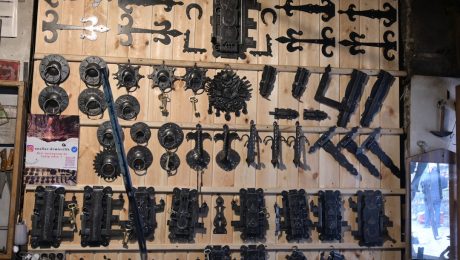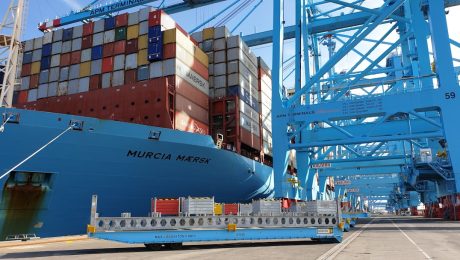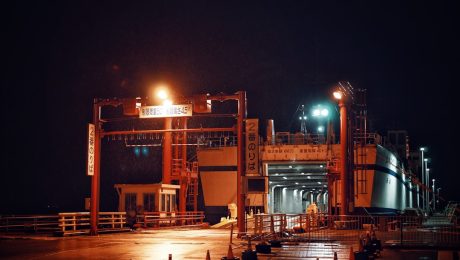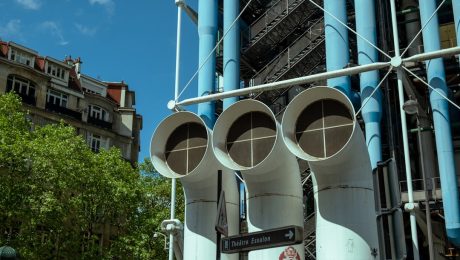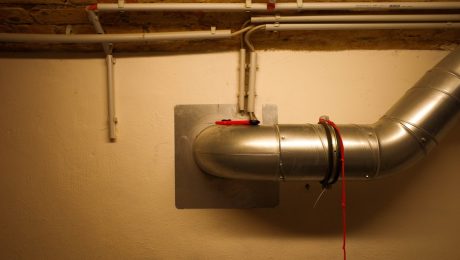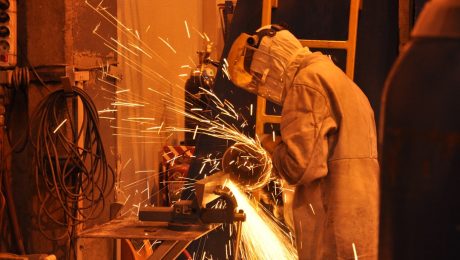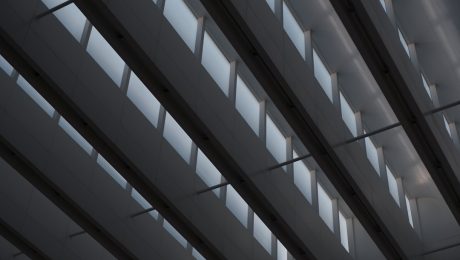body {
font-family: sans-serif;
line-height: 1.6;
}
h1, h2, h3 {
color: #333;
}
h1 {
font-size: 2.5em;
}
h2 {
font-size: 2em;
}
h3 {
font-size: 1.5em;
}
In today’s interconnected world, businesses of all sizes are increasingly engaging in international trade. Successfully navigating the complexities of global delivery is crucial for growth and maintaining customer satisfaction. This comprehensive guide will unravel the intricacies of the global delivery process, providing a clear understanding of each stage involved.
1. Order Placement and Processing: The Foundation of Global Delivery
The journey begins with the customer placing an order. This seemingly simple step initiates a complex chain of events. Efficient order management systems are paramount. These systems must accurately record order details, including product specifications, shipping address (including accurate postal codes and any necessary customs information), payment details, and any special instructions. Accurate data entry minimizes errors and delays later in the process. Automated order processing systems can significantly streamline this stage, reducing manual intervention and potential human error. Integration with inventory management systems ensures that orders can be fulfilled promptly, with real-time updates on stock availability.
2. Packaging and Warehousing: Protecting Your Goods for the Journey
Proper packaging is crucial to ensure the safe arrival of goods. This involves selecting appropriate packaging materials based on the product’s fragility and the journey’s length and conditions. International shipments often require robust packaging to withstand the rigors of multiple handling points and potential environmental factors. Pallet wrapping, cushioning materials, and sturdy boxes are often essential. Warehousing plays a critical role, providing a secure and organized space for storing goods before shipment. Efficient warehouse management systems are essential for tracking inventory, managing order fulfillment, and optimizing space utilization. Strategic warehouse location can also significantly impact delivery times and costs.
3. Customs Clearance and Documentation: Navigating International Regulations
This stage is arguably the most complex aspect of global delivery. International shipments are subject to various customs regulations and procedures. Accurate and complete documentation is crucial for smooth clearance. This includes commercial invoices, packing lists, certificates of origin, and any other required permits or licenses. Inaccuracies or missing documentation can lead to significant delays, fines, or even the seizure of goods. Understanding the specific regulations of both the exporting and importing countries is paramount. Working with a customs broker can significantly simplify this process, providing expertise in navigating complex regulations and ensuring compliance.
4. Transportation and Logistics: Choosing the Right Mode of Delivery
Choosing the optimal mode of transportation is a key decision. Options include air freight (fastest but most expensive), sea freight (slowest but cheapest), and road or rail freight (a balance between speed and cost). The choice depends on factors such as the urgency of delivery, the nature of the goods, and the distance involved. Tracking the shipment throughout its journey is vital, allowing for proactive issue resolution. Real-time tracking systems provide updates on location and status, enabling efficient communication with customers. Effective logistics management involves optimizing routes, selecting reliable carriers, and managing potential disruptions effectively.
5. Final Delivery and Customer Service: The End of the Journey
The final stage involves the delivery of goods to the customer. This includes coordinating with local delivery services and ensuring accurate delivery addresses. Clear communication with the customer throughout the process is essential, providing updates on the shipment’s status and anticipated delivery date. Customer service plays a crucial role in addressing any issues or concerns that may arise. Efficient returns and exchange processes are important aspects of customer satisfaction, especially for international shipments. Collecting feedback from customers helps identify areas for improvement and optimize the overall global delivery process.
Challenges in Global Delivery
Global delivery faces numerous challenges, including: Varying customs regulations across countries, logistical complexities, language barriers, currency fluctuations, political instability in certain regions, potential for damage or loss during transit, and managing unexpected delays.
Best Practices for Efficient Global Delivery
To optimize global delivery, companies should: Invest in robust technology for order management and tracking, build strong relationships with reliable logistics providers, ensure accurate and complete documentation, proactively manage risks and potential disruptions, prioritize customer communication and service, and continuously monitor and improve processes based on data and feedback.
By understanding and implementing these strategies, businesses can effectively navigate the complexities of global delivery, ensuring timely and efficient delivery of goods, and ultimately enhancing customer satisfaction and business success.
In the heart of industrial innovation lies the critical role of machine parts. While off-the-shelf components often suffice, demanding applications frequently necessitate the precision and bespoke nature of customized steel machine parts. This comprehensive guide delves into the world of tailored steel components, exploring their design, manufacturing, and applications to help you understand how these crucial elements power modern machinery.
1. Designing for Strength and Precision: The Blueprint of Bespoke Steel
The design phase is paramount when it comes to customized steel machine parts. It’s not merely about sketching an idea; it’s about meticulous engineering that considers factors like material selection, stress analysis, and dimensional tolerances. Finite Element Analysis (FEA) software is often employed to simulate real-world conditions and predict the performance of the part under various loads and stresses. This allows engineers to optimize the design for maximum strength, durability, and efficiency, minimizing the risk of failure and ensuring longevity. The design must also account for the specific application, considering factors such as temperature fluctuations, corrosive environments, and required levels of precision. Detailed drawings, including precise dimensions, material specifications, and surface finish requirements, are crucial for accurate manufacturing.
2. Material Matters: Choosing the Right Steel Grade for Your Needs
Steel isn’t a monolithic material; it encompasses a vast array of grades, each with distinct properties. The selection of the appropriate steel grade is critical to the performance of the custom part. Factors to consider include: strength (yield strength and tensile strength), hardness, toughness (resistance to fracture), machinability (ease of processing), weldability, and corrosion resistance. Common steel grades used in machine parts include low carbon steel (for general applications), medium carbon steel (for higher strength), high carbon steel (for exceptional hardness), alloy steels (for enhanced properties like corrosion resistance), and stainless steels (for superior corrosion resistance). The choice depends heavily on the specific demands of the application. A component operating under high stress will require a higher strength steel, while one exposed to harsh chemicals might necessitate a stainless steel grade.
3. Precision Manufacturing: From Blueprint to Reality
The transition from design to finished product involves advanced manufacturing techniques. Several methods are employed to create customized steel machine parts, including:
- CNC Machining: Computer Numerical Control machining offers exceptional precision and repeatability, allowing for complex geometries and tight tolerances.
- Forging: This process shapes steel using compressive forces, resulting in high strength and durability. It’s ideal for parts requiring exceptional strength and resistance to fatigue.
- Casting: Casting involves pouring molten steel into a mold, allowing for intricate designs and large production volumes. However, it might require subsequent machining for precise dimensions.
- Welding: Welding is used to join different steel components, enabling the creation of complex assemblies.
- 3D Printing (Additive Manufacturing): This emerging technology allows for the creation of complex geometries and lightweight designs that might be impossible with traditional methods.
The choice of manufacturing process depends on factors such as part complexity, required tolerances, material properties, and production volume.
4. Quality Assurance: Ensuring Peak Performance Through Rigorous Testing
Quality control is an integral part of the process. Rigorous testing is conducted throughout the manufacturing process to ensure that the finished parts meet the specified requirements. This includes dimensional inspections to verify accuracy, material testing to confirm the chosen steel grade and its properties, and performance testing to evaluate the part’s strength, durability, and functionality under simulated operating conditions. Non-destructive testing (NDT) methods, such as ultrasonic testing and magnetic particle inspection, are often used to detect internal flaws without damaging the part. Quality control ensures that the final product meets the highest standards of performance and reliability.
5. Applications Across Industries: The Versatility of Customized Steel Parts
Customized steel machine parts find applications across a wide spectrum of industries. Their strength, durability, and precision make them indispensable in:
- Automotive: Engine components, transmission parts, chassis components, and body parts.
- Aerospace: Aircraft landing gear, engine components, structural components.
- Heavy Machinery: Excavator parts, crane components, construction equipment parts.
- Manufacturing: Industrial machinery components, tooling, fixtures.
- Energy: Power generation equipment components, oil and gas industry equipment.
- Medical Equipment: Precision components for surgical instruments and medical devices.
The versatility of customized steel parts allows for tailored solutions to meet the specific needs of each industry, driving innovation and improving performance across various applications.
In conclusion, customized steel machine parts are essential components in a vast array of industries. Their design, material selection, manufacturing process, and quality control are all crucial factors in ensuring their performance and reliability. By understanding these aspects, businesses can leverage the power of bespoke steel components to create innovative and high-performing machinery.
In today’s interconnected world, businesses of all sizes rely on efficient and reliable logistics to navigate the complexities of global trade. This isn’t just about shipping goods; it’s about managing a complex web of relationships, processes, and technologies. Global logistics partner networks are the backbone of this system, offering a crucial advantage to companies looking to expand their reach and optimize their supply chains. This post will delve into the essential aspects of these networks, exploring their benefits and challenges.
1. The Architecture of a Global Logistics Partner Network
A global logistics partner network is more than just a collection of individual carriers and service providers. It’s a strategically designed ecosystem encompassing various partners, each specializing in specific aspects of the logistics process. This could include:
- Freight Forwarders: These companies act as intermediaries, arranging transportation and handling documentation across multiple modes of transport (sea, air, land).
- Customs Brokers: Experts in navigating import/export regulations, ensuring compliance and minimizing delays.
- Warehousing and Distribution Centers: Providing storage, inventory management, and order fulfillment services.
- Transportation Providers: Airlines, shipping lines, trucking companies, and rail operators responsible for the physical movement of goods.
- Technology Providers: Companies offering software and platforms for tracking, managing, and optimizing logistics operations (TMS, WMS).
These partners are interconnected, often through sophisticated technology platforms, to create a seamless flow of goods and information.
2. Optimizing Supply Chains Through Strategic Partnerships
The primary benefit of a global logistics partner network is its ability to optimize supply chains. By leveraging the expertise of specialized partners, businesses can:
- Reduce Costs: Negotiating better rates with carriers and streamlining processes leads to significant cost savings.
- Improve Efficiency: Automated systems and integrated workflows minimize delays and improve overall speed and reliability.
- Enhance Visibility: Real-time tracking and data analytics provide complete visibility into the supply chain, enabling proactive problem-solving.
- Increase Agility: The network’s flexibility allows businesses to quickly adapt to changing market demands and disruptions.
- Expand Reach: Access to a global network of partners enables businesses to reach new markets and customers efficiently.
A well-structured network allows for better forecasting, inventory management, and overall supply chain responsiveness.
3. Mitigating Risk and Ensuring Resilience
Global logistics inherently involves numerous risks, including geopolitical instability, natural disasters, and supply chain disruptions. A robust partner network helps mitigate these risks by:
- Diversification: Relying on multiple partners reduces dependence on any single provider, minimizing the impact of disruptions.
- Contingency Planning: Partners can collaborate to develop contingency plans for various scenarios, ensuring business continuity.
- Risk Management Expertise: Partners often have specialized expertise in risk assessment and mitigation, providing valuable insights and guidance.
- Insurance and Security: Many partners offer insurance and security solutions to protect goods during transit and storage.
- Compliance and Regulatory Expertise: Navigating complex international regulations is simplified through the expertise of customs brokers and other specialized partners.
This proactive approach to risk management is crucial for maintaining the stability and reliability of the supply chain.
4. Technology’s Role in Global Logistics Partner Networks
Technology plays a pivotal role in modern global logistics partner networks. Advanced technologies such as:
- Transportation Management Systems (TMS): Software solutions that optimize transportation planning, execution, and tracking.
- Warehouse Management Systems (WMS): Software for managing inventory, order fulfillment, and warehouse operations.
- Blockchain Technology: Enhancing transparency and security in supply chain transactions.
- Internet of Things (IoT): Real-time tracking and monitoring of goods throughout the supply chain.
- Artificial Intelligence (AI) and Machine Learning (ML): Predictive analytics for optimizing routes, forecasting demand, and improving efficiency.
These technologies improve communication, collaboration, and data visibility across the network, leading to greater efficiency and reduced costs.
5. Selecting and Managing Global Logistics Partners
Building a successful global logistics partner network requires careful planning and execution. Key considerations include:
- Partner Selection: Thoroughly vetting potential partners based on their experience, reputation, financial stability, and technological capabilities.
- Contract Negotiation: Establishing clear contracts that define responsibilities, service levels, and performance metrics.
- Performance Monitoring: Regularly monitoring partner performance against agreed-upon KPIs and addressing any issues promptly.
- Communication and Collaboration: Maintaining open communication channels and fostering strong collaborative relationships with partners.
- Continuous Improvement: Regularly reviewing and optimizing the network’s structure and processes to ensure ongoing efficiency and effectiveness.
A well-managed network requires ongoing attention and proactive management to ensure its long-term success.
In conclusion, global logistics partner networks are essential for businesses operating in the global marketplace. By leveraging the expertise and resources of specialized partners, companies can optimize their supply chains, mitigate risks, and achieve significant competitive advantages. The future of global logistics will continue to be shaped by technological advancements, requiring businesses to adapt and embrace innovation to stay ahead of the curve.
Tags: Global Logistics, Logistics Partner Network, Supply Chain Management, International Shipping, Freight Forwarding
body { font-family: sans-serif; line-height: 1.6; }
h1, h2, h3 { color: #333; }
h1 { font-size: 2.5em; }
h2 { font-size: 2em; }
h3 { font-size: 1.5em; }
The machinery manufacturing industry relies heavily on a consistent and reliable supply of high-quality steel. From the smallest component to the largest frame, steel forms the backbone of countless machines. This blog post delves into the intricacies of steel supply for this crucial sector, exploring the challenges and opportunities involved.
Sourcing Steel: Finding the Right Supplier
Securing a dependable steel supply is paramount for machinery manufacturers. This involves more than just finding the cheapest option; it requires a strategic approach considering several factors. Geographical proximity can significantly impact transportation costs and delivery times. Choosing a supplier with a proven track record of quality and timely delivery is crucial to avoid production delays. Manufacturers should also consider the supplier’s capacity to meet fluctuating demand, their commitment to sustainability, and their ability to provide various steel grades and specifications. Building strong, long-term relationships with key suppliers is often beneficial, fostering collaboration and ensuring a consistent flow of materials.
Furthermore, understanding the supplier’s certifications, such as ISO 9001 for quality management systems, is essential to guarantee the steel meets the required standards. Due diligence, including thorough background checks and referencing, is a crucial step in the sourcing process.
Types of Steel for Machinery Manufacturing: A Diverse Landscape
The machinery industry uses a vast array of steel grades, each tailored to specific applications. Carbon steel, a cost-effective option, is commonly used for less demanding components. Alloy steels, containing elements like chromium, nickel, and molybdenum, offer enhanced properties such as increased strength, toughness, and corrosion resistance. These are often preferred for high-stress applications or components exposed to harsh environments. Stainless steel, known for its exceptional corrosion resistance, is vital in applications involving chemicals or moisture. Tool steels, characterized by their hardness and wear resistance, are essential for creating cutting tools and dies. The choice of steel depends critically on the machine’s function, operating conditions, and required lifespan. Incorrect steel selection can lead to premature failure and costly replacements.
Quality Control: Ensuring Steel Meets Specifications
Maintaining stringent quality control throughout the steel supply chain is non-negotiable. Manufacturers must implement rigorous testing procedures to verify that incoming steel meets the specified chemical composition, mechanical properties, and dimensional tolerances. This often involves destructive and non-destructive testing methods, including tensile testing, hardness testing, and ultrasonic inspection. Regular audits of suppliers’ facilities can help ensure consistent quality. Clear documentation and traceability throughout the supply chain are also critical, allowing for quick identification and resolution of any quality issues. A robust quality control system not only prevents defects but also enhances the reputation and reliability of the machinery manufacturer.
Supply Chain Management: Optimizing Steel Flow
Effective supply chain management is crucial for minimizing disruptions and optimizing the flow of steel. This involves employing strategies like just-in-time inventory management to reduce storage costs and minimize waste. Diversifying suppliers can mitigate risks associated with single-source dependency. Utilizing advanced technologies, such as supply chain management software, can improve visibility and enhance coordination among suppliers, manufacturers, and logistics providers. Real-time tracking of shipments and inventory levels enables proactive management of potential delays or shortages. A well-managed supply chain ensures a continuous supply of steel, minimizing production downtime and maximizing efficiency.
Future Trends in Steel Supply for Machinery Manufacturing
The steel industry is undergoing significant transformation, driven by factors such as sustainability concerns and technological advancements. The increasing demand for high-strength, lightweight steels is pushing innovation in materials science. The adoption of advanced manufacturing techniques, such as additive manufacturing (3D printing), is revolutionizing the way steel components are produced. Furthermore, the focus on sustainable steel production, with reduced carbon emissions and responsible sourcing practices, is becoming increasingly important. Manufacturers need to adapt to these trends by embracing new technologies and collaborating with suppliers who prioritize sustainability and innovation. The future of machinery manufacturing hinges on a secure, efficient, and sustainable steel supply chain.
Conclusion: The steel supply chain is a vital component of machinery manufacturing. By understanding the intricacies of sourcing, quality control, and supply chain management, manufacturers can ensure a reliable supply of high-quality steel, ultimately contributing to the production of robust and efficient machinery.
Tags: Steel Supply, Machinery Manufacturing, Steel Sourcing, Quality Control Steel, Supply Chain Management
body {
font-family: sans-serif;
line-height: 1.6;
}
h1, h2, h3 {
color: #333;
}
img {
max-width: 100%;
height: auto;
}
Waste heat recovery (WHR) is gaining significant traction as a sustainable solution to reduce energy consumption and carbon emissions. While various technologies are employed in WHR systems, a critical, often overlooked component is the piping system. The pipes themselves are the arteries of the system, responsible for transporting the recovered heat to its point of use. Understanding the intricacies of pipe selection, design, and maintenance is paramount for maximizing the efficiency and longevity of any WHR project.
1. Material Selection: Finding the Right Pipe for the Job
The choice of pipe material is crucial, dictated by factors such as the temperature and pressure of the recovered heat, the chemical composition of the heat transfer fluid, and the overall project budget. Several materials are commonly used:
- Stainless Steel: Offers excellent corrosion resistance and high-temperature capabilities, making it suitable for a wide range of applications. However, it can be more expensive than other options.
- Carbon Steel: A cost-effective choice for lower-temperature applications, but susceptible to corrosion, requiring protective coatings or linings in many WHR scenarios.
- Copper: Possesses excellent thermal conductivity, making it efficient for heat transfer. It’s also corrosion-resistant, but its cost can be a limiting factor.
- High-Density Polyethylene (HDPE): A lightweight, durable, and cost-effective option for lower-temperature, lower-pressure applications. Its flexibility allows for easier installation in complex configurations.
- Cross-Linked Polyethylene (PEX): Similar to HDPE but offers enhanced temperature and pressure resistance, making it suitable for a broader range of WHR applications.
The selection process often involves a thorough material compatibility assessment to ensure the pipe material won’t react negatively with the heat transfer fluid, leading to corrosion or degradation.
2. Pipe Design and Layout: Optimizing Heat Transfer and Minimizing Losses
The design and layout of the piping system are critical for efficient heat transfer and minimizing heat loss. Several factors must be considered:
- Pipe Diameter: Proper diameter selection is crucial to maintain optimal flow velocity and minimize pressure drop. Too small a diameter leads to increased pressure drop and potential energy loss; too large a diameter increases the surface area exposed to heat loss.
- Pipe Length: Minimizing pipe length reduces heat loss and pressure drop. Careful planning and routing are essential to optimize the system layout.
- Pipe Fittings and Valves: The use of appropriately sized and designed fittings and valves is crucial to avoid flow restrictions and pressure losses. Proper selection minimizes turbulence and pressure drops.
- Expansion Loops: Incorporating expansion loops accommodates thermal expansion and contraction of the pipes due to temperature fluctuations, preventing stress and potential leaks.
- Slope and Drainage: Proper slope is crucial to facilitate drainage and prevent the accumulation of condensate, which can lead to corrosion and system malfunction.
Sophisticated computational fluid dynamics (CFD) modeling can be used to optimize pipe design and layout for maximum efficiency.
3. Insulation: Preventing Heat Loss and Maximizing Efficiency
Insulating the pipes is crucial to minimize heat loss to the surroundings and maximize the efficiency of the WHR system. The choice of insulation material depends on the operating temperature and environmental conditions. Common insulation materials include:
- Fiberglass: A cost-effective option for lower-temperature applications.
- Mineral wool: Offers good thermal performance and fire resistance.
- Calcium silicate: Suitable for high-temperature applications.
- Polyurethane foam: Provides excellent thermal insulation and is often used in pre-insulated pipe systems.
The thickness of the insulation layer is determined by the desired level of heat loss reduction and the operating temperature. Proper installation is crucial to ensure the insulation’s effectiveness and to prevent heat bridges.
4. Maintenance and Monitoring: Ensuring Long-Term Performance
Regular maintenance and monitoring are essential for ensuring the long-term performance and efficiency of the WHR piping system. This includes:
- Visual Inspections: Regular visual inspections to detect any signs of leaks, corrosion, or damage to the pipes or insulation.
- Pressure Testing: Periodic pressure testing to identify any leaks or weaknesses in the system.
- Fluid Analysis: Regular analysis of the heat transfer fluid to detect any signs of contamination or degradation.
- Cleaning and Flushing: Periodic cleaning and flushing of the piping system to remove any accumulated debris or contaminants.
<liThermal Imaging: Using thermal imaging cameras to detect areas of heat loss, which can indicate insulation damage or other problems.
Implementing a comprehensive maintenance program can significantly extend the lifespan of the WHR piping system and maintain its efficiency.
5. Advanced Technologies and Future Trends
The field of WHR is constantly evolving, with ongoing research and development focused on improving the efficiency and effectiveness of piping systems. Some promising trends include:
- Smart Pipes: Incorporating sensors and data logging capabilities into the pipes to monitor pressure, temperature, and flow rates in real-time, enabling predictive maintenance and optimized system operation.
- Advanced Materials: The development of new materials with enhanced thermal conductivity, corrosion resistance, and durability, leading to more efficient and longer-lasting piping systems.
- Improved Insulation Technologies: Research on new insulation materials and techniques to further minimize heat loss and improve energy efficiency.
- Integration with AI and Machine Learning: Using AI and machine learning to optimize the design, operation, and maintenance of WHR piping systems, leading to greater efficiency and reduced energy consumption.
These advancements promise to make WHR increasingly cost-effective and environmentally friendly, contributing significantly to a more sustainable future.
In conclusion, the piping system is a crucial component of any waste heat recovery project. Careful consideration of material selection, design, insulation, and maintenance practices is essential for maximizing efficiency and ensuring the long-term success of these vital sustainability initiatives.
Tags: Waste Heat Recovery, WHR Pipes, Pipe Insulation, Heat Transfer, Sustainable Energy
In today’s competitive landscape, operational efficiency isn’t just a desirable trait – it’s a necessity for survival. Businesses that can streamline their processes, optimize workflows, and maximize productivity are better positioned for growth, profitability, and long-term success. This comprehensive guide will explore key strategies to help you unlock peak performance and significantly improve your operational efficiency.
1. Streamlining Processes: Identifying and Eliminating Bottlenecks
The first step towards improving operational efficiency is to thoroughly analyze your existing processes. Look for bottlenecks – points in your workflow where tasks slow down or get stuck. These bottlenecks can be identified through various methods, including process mapping, data analysis, and employee feedback. Once identified, you can begin to address them. This might involve automating repetitive tasks, re-allocating resources, or simplifying complex procedures. For example, a manufacturing company might identify a bottleneck in the quality control stage. By investing in automated inspection technology, they can significantly reduce processing time and improve accuracy, leading to increased output and reduced waste.
Consider using Lean methodologies like Kaizen, which emphasizes continuous improvement through small, incremental changes. By focusing on eliminating waste (muda) in all its forms – overproduction, waiting, transportation, over-processing, inventory, motion, and defects – you can significantly streamline your processes and boost efficiency.
2. Optimizing Workflows: Leveraging Technology and Automation
Once bottlenecks are addressed, focus on optimizing the overall workflow. This involves integrating technology and automation to streamline tasks and improve collaboration. Consider using project management software to track progress, manage deadlines, and enhance communication among team members. Automation tools can handle repetitive tasks, reducing human error and freeing up employees for more strategic work. For instance, automating invoice processing can significantly reduce the time spent on administrative tasks, allowing accounting staff to focus on more complex financial analysis.
Implementing a robust Customer Relationship Management (CRM) system can also significantly improve efficiency. A centralized system allows for better customer data management, improved communication, and streamlined sales processes, ultimately leading to increased customer satisfaction and improved revenue generation.
3. Empowering Employees: Fostering a Culture of Efficiency
Operational efficiency isn’t solely about technology and processes; it’s also about people. Empowering your employees to take ownership of their work and contribute to continuous improvement is crucial. This involves providing them with the necessary training, tools, and resources to perform their tasks effectively. Create a culture of open communication and feedback, encouraging employees to identify areas for improvement and suggest solutions. Regular performance reviews and constructive feedback sessions can help identify skill gaps and opportunities for development.
Employee engagement is directly linked to productivity. Investing in employee well-being, providing opportunities for professional growth, and fostering a positive work environment can significantly improve morale and drive efficiency.
4. Data-Driven Decision Making: Utilizing Analytics for Continuous Improvement
Data is the lifeblood of operational efficiency. By collecting and analyzing data from various sources, you can gain valuable insights into your processes, identify areas for improvement, and track the effectiveness of your initiatives. Key Performance Indicators (KPIs) should be established to monitor progress and measure success. These KPIs might include production output, customer satisfaction scores, defect rates, and employee turnover. Regularly analyzing this data allows you to identify trends, predict potential problems, and make data-driven decisions to optimize operations.
Utilizing business intelligence tools and dashboards can provide a clear and concise overview of your operational performance, allowing for quick identification of issues and prompt corrective action.
5. Investing in Infrastructure: The Foundation for Efficiency
Finally, don’t underestimate the importance of investing in the right infrastructure to support your operational efficiency goals. This includes investing in the necessary technology, equipment, and facilities to streamline processes and enhance productivity. This might involve upgrading outdated systems, investing in new software, or improving physical workspace layouts to optimize workflow. Regular maintenance and upkeep of equipment are also crucial to prevent costly downtime and ensure consistent operation.
Consider the long-term implications of your infrastructure investments. Choosing scalable solutions that can adapt to future growth and changing business needs is essential for sustained operational efficiency.
By implementing these strategies, businesses can significantly improve their operational efficiency, leading to increased profitability, enhanced customer satisfaction, and a more sustainable competitive advantage. Remember that continuous monitoring, evaluation, and adaptation are key to achieving lasting success.
SEO Tags:
Operational Efficiency, Process Optimization, Workflow Improvement, Lean Methodology, Business Productivity
Choosing the right steel supplier is crucial for any business relying on steel for its operations. A poor choice can lead to project delays, cost overruns, and compromised product quality. This comprehensive guide will equip you with the knowledge and tools to effectively evaluate potential steel suppliers and make an informed decision that benefits your bottom line and long-term success.
1. Assessing Steel Quality and Certifications
The cornerstone of any successful steel procurement strategy is ensuring consistent, high-quality steel. Begin your evaluation by thoroughly investigating the supplier’s quality control processes. Request copies of their quality management system (QMS) documentation, ideally ISO 9001 certified. Look for evidence of rigorous testing procedures at various stages of production, including chemical composition analysis, mechanical testing (tensile strength, yield strength, elongation), and non-destructive testing (NDT) methods like ultrasonic testing or magnetic particle inspection. Inquire about their rejection rate and their procedures for handling non-conforming materials. The supplier should be transparent about their quality control measures and readily provide documentation to support their claims.
Furthermore, check for relevant industry-specific certifications. Depending on your application, this might include certifications related to specific steel grades (e.g., ASTM, EN, JIS standards), environmental compliance (e.g., ISO 14001), or safety (e.g., OHSAS 18001). These certifications demonstrate the supplier’s commitment to meeting stringent industry standards and provide assurance of consistent quality and compliance.
2. Evaluating Delivery Reliability and Lead Times
Reliable delivery is paramount, especially for projects with tight deadlines. Investigate the supplier’s track record in meeting delivery schedules. Request references and contact previous clients to inquire about their experiences with on-time delivery. Analyze the supplier’s logistics capabilities, including their transportation network, warehousing facilities, and inventory management systems. A robust logistics system is essential for ensuring timely delivery and minimizing disruptions to your operations.
Inquire about their lead times for various steel grades and quantities. Understand their capacity to handle both small and large orders without compromising delivery schedules. Consider their proximity to your facility – a closer supplier might offer faster delivery and reduced transportation costs. Discuss contingency plans for unforeseen circumstances, such as supply chain disruptions or unexpected delays. A well-prepared supplier should have strategies in place to mitigate these risks.
3. Analyzing Pricing Strategies and Payment Terms
Steel prices fluctuate significantly due to market conditions and raw material costs. Obtain detailed pricing information from multiple suppliers, ensuring you compare apples to apples. Don’t just focus on the initial price; consider the total cost of ownership, including transportation, handling, and any potential penalties for late delivery or quality issues. Negotiate favorable payment terms, such as extended payment periods or discounts for bulk orders. Be wary of suppliers offering unusually low prices – this could indicate compromised quality or questionable business practices.
Understand the supplier’s pricing structure. Are they offering fixed prices, or are prices subject to market fluctuations? If the latter, how will price changes be communicated and implemented? Clarify any hidden costs or surcharges. A transparent pricing structure is crucial for predictable budgeting and cost management.
4. Assessing the Supplier’s Financial Stability and Reputation
Choosing a financially stable supplier is crucial for ensuring long-term supply security. Research the supplier’s financial history, credit rating, and market standing. Look for evidence of consistent profitability and a strong balance sheet. A financially unstable supplier may be more prone to delays, disruptions, or even bankruptcy, putting your projects at risk.
Investigate the supplier’s reputation within the industry. Consult online reviews, industry publications, and professional networks to gather insights into their performance and customer satisfaction. Look for any negative feedback or red flags that could indicate potential problems. A strong reputation is a testament to the supplier’s commitment to quality, reliability, and ethical business practices.
5. Building a Long-Term Partnership
Selecting a steel supplier is not just about finding the cheapest option; it’s about building a long-term partnership based on mutual trust and collaboration. Consider the supplier’s commitment to innovation, technological advancements, and sustainability. A forward-thinking supplier will be better equipped to meet your evolving needs and adapt to changing market conditions.
Discuss the supplier’s customer service capabilities, including their responsiveness, communication channels, and problem-solving skills. A responsive and proactive supplier will be more likely to address any issues promptly and effectively. Building a strong relationship with your supplier fosters open communication, facilitates efficient problem-solving, and contributes to a more successful and mutually beneficial partnership.
By carefully considering these five key aspects, you can significantly improve your chances of selecting a reliable and high-performing steel supplier. Remember that choosing the right partner is a strategic decision that can significantly impact your business’s success.
SEO Tags:
steel supplier evaluation, steel quality control, steel supplier selection, steel certifications, reliable steel supplier
The number 500. A seemingly ordinary number, yet its presence resonates across diverse fields, from the mundane to the extraordinary. This post delves into the multifaceted nature of 500, exploring its mathematical properties, historical context, cultural significance, and appearances in various aspects of life. Prepare to uncover the hidden depths of this intriguing numeral.
500 in Mathematics: Properties and Significance
Mathematically, 500 is a composite number, meaning it has more than two factors. Its prime factorization is 22 x 53. This simple breakdown reveals its inherent divisibility by 2, 4, 5, 10, 20, 25, 50, 100, and 125. This divisibility makes it useful in various calculations and applications, particularly in systems involving base-10 arithmetic. Furthermore, its position within the number system places it as a significant milestone, representing half of a thousand, a frequently used benchmark in many quantitative analyses. Consider its role in statistics, where sample sizes of 500 are often considered sufficiently large for reliable estimations. Its use in rounding and approximation also highlights its practical mathematical importance.
500 in History and Culture: A Journey Through Time
The number 500 holds historical and cultural significance in various civilizations. In ancient Rome, the number represented a substantial quantity, often associated with large-scale projects or significant events. The 500th anniversary of important historical events continues to be celebrated across the globe, signifying a remarkable passage of time and offering an opportunity for reflection. Moreover, certain cultures associate 500 with specific symbols or meanings. For instance, in some spiritual traditions, the number might symbolize completeness or enlightenment, a culmination of a spiritual journey. Its presence in historical documents, architectural designs, and artistic expressions further underscores its enduring cultural relevance.
500 in Sports and Games: Victories, Records, and Milestones
In the world of sports, 500 often represents a significant milestone. In motorsport, reaching 500 wins or achieving a 500-point season is a testament to exceptional skill and consistency. The Indianapolis 500, one of the most prestigious auto racing events globally, highlights the cultural significance of the number in this context. Similarly, in other sports, scoring 500 runs in cricket or reaching 500 points in basketball are considered remarkable feats, symbolizing dominance and excellence. The number’s use in scoring, ranking, and record-keeping reinforces its importance in the competitive landscape of sports and games.
500 in Finance and Economics: Currency, Investments, and Transactions
The number 500 plays a significant role in the financial world. Many countries have banknotes or coins denominated at 500 units of their currency, highlighting its practical use in everyday transactions. The value of 500 units, depending on the currency, can represent a substantial amount, affecting individual budgets and influencing economic decisions. Furthermore, in investment and trading, 500 might represent a significant investment amount or a target profit margin. The use of 500 in financial modeling, statistical analysis, and economic projections further demonstrates its importance in the world of finance.
500 in Popular Culture and Media: References and Symbolism
The number 500 has found its way into popular culture and media, often carrying symbolic weight or serving as a plot device. Movies, books, and songs may feature the number prominently, often imbued with specific meanings depending on the context. The use of 500 in movie titles, song lyrics, or fictional narratives adds to its cultural ubiquity. Analyzing its presence in various forms of media helps to understand its evolving symbolic significance and its impact on storytelling and audience perception. The persistence of 500 in popular culture indicates its enduring resonance with audiences worldwide.
In conclusion, the number 500 transcends its simple numerical value. Its multifaceted presence across mathematics, history, culture, sports, finance, and popular media underscores its deep-rooted significance in human experience. Understanding its varied contexts enriches our appreciation for the subtle yet profound influence of numbers in shaping our world.
Tags: 500, number 500, significance of 500, cultural significance of numbers, mathematical properties, historical context
body {
font-family: sans-serif;
line-height: 1.6;
}
h1, h2, h3 {
color: #333;
}
h1 {
font-size: 2.5em;
}
h2 {
font-size: 2em;
}
h3 {
font-size: 1.5em;
}
Cold drawn round steel bars are a crucial component in countless industries, offering a combination of strength, precision, and surface finish unmatched by many other materials. This comprehensive guide will delve into the intricacies of these versatile steel bars, exploring their manufacturing, properties, applications, advantages, and selection criteria.
The Manufacturing Process: From Hot Rolled to Precision
The journey of a cold drawn round steel bar begins with hot-rolled steel. Hot rolling is a high-temperature process that shapes the steel into a basic round bar. However, hot rolling leaves the bar with a rough surface and dimensional inaccuracies. This is where cold drawing comes in. Cold drawing is a process where the hot-rolled bar is pulled through a series of dies at room temperature, reducing its diameter and improving its surface finish. This cold working process significantly increases the steel’s tensile strength and yield strength while simultaneously improving its dimensional accuracy. The reduction in diameter is typically incremental, with multiple passes through increasingly smaller dies to achieve the desired final dimensions. Lubricants are crucial during this process to reduce friction and prevent surface damage. The precision achieved through cold drawing is a key factor in the widespread use of these bars in demanding applications.
Exceptional Mechanical Properties: Strength and Beyond
Cold drawing imparts several desirable mechanical properties to the steel. The cold working process significantly increases the tensile strength and yield strength compared to hot-rolled bars. This enhanced strength makes cold drawn bars ideal for applications requiring high load-bearing capacity. Furthermore, the process improves the surface hardness, leading to increased wear resistance. The improved surface finish also reduces the likelihood of stress concentrations, contributing to enhanced fatigue life. The precise dimensions achieved during cold drawing ensure consistent performance and simplify assembly processes. The specific mechanical properties vary depending on the grade of steel used and the degree of cold work applied.
Diverse Applications: Where Cold Drawn Steel Shines
The combination of high strength, precision, and excellent surface finish makes cold drawn round steel bars incredibly versatile. They find applications across a wide range of industries, including:
- Automotive: Used in various components like axles, shafts, and connecting rods.
- Construction: Employed in reinforcing bars and structural elements.
- Machinery Manufacturing: Essential for creating shafts, spindles, and other precision components.
- Aerospace: Used in high-strength, lightweight components requiring precise tolerances.
- Medical Devices: Used in the manufacture of surgical instruments and implants.
- Energy: Used in various components of turbines, pumps, and other energy-related machinery.
The specific grade of steel used often dictates the suitability for a particular application, with higher strength grades chosen for more demanding tasks.
Advantages over Other Steel Types: Why Choose Cold Drawn?
Compared to hot-rolled steel bars, cold drawn bars offer several distinct advantages:
- Higher Strength: Significantly increased tensile and yield strength.
- Improved Surface Finish: Smoother surface reduces friction and wear.
- Greater Dimensional Accuracy: Precise diameters and tolerances minimize machining requirements.
- Enhanced Fatigue Resistance: Reduced stress concentrations lead to longer lifespan.
- Better Machinability: The smoother surface can improve machining efficiency.
These advantages translate to cost savings, improved performance, and enhanced reliability in various applications.
Selecting the Right Grade: Considerations for Your Project
Choosing the appropriate grade of cold drawn round steel bar is crucial for ensuring the success of your project. Various grades are available, each with different chemical compositions and mechanical properties. Factors to consider include:
- Required Strength: Select a grade that meets or exceeds the load-bearing requirements.
- Surface Finish Requirements: Consider the necessary surface smoothness for the application.
- Dimensional Tolerances: Specify the required precision for your project.
- Corrosion Resistance: Choose a grade with appropriate corrosion resistance if exposure to harsh environments is expected.
- Budget: Balance performance requirements with cost considerations.
Consulting with a steel supplier can help you navigate the various options and select the optimal grade for your specific needs.
In conclusion, cold drawn round steel bars are a vital material in numerous industries, offering a compelling blend of strength, precision, and versatility. Understanding their manufacturing process, properties, and applications is crucial for engineers and designers seeking high-performance materials for their projects.
SEO Tags:
Cold Drawn Steel, Round Steel Bars, Steel Bar Manufacturing, Mechanical Properties of Steel, Steel Bar Applications
Modern architecture demands innovative and efficient structural solutions. IPE steel beams, with their distinctive I-shaped profile, are increasingly becoming the material of choice for architects and engineers seeking strength, versatility, and aesthetic appeal. This comprehensive guide explores the multifaceted role of IPE beams in contemporary building design.
Understanding the IPE Beam Profile
IPE beams, originating from the European standard, are hot-rolled steel sections characterized by their distinctive I-shape. This profile maximizes strength-to-weight ratio, making them ideal for spanning large distances while minimizing material usage. The “I” shape is incredibly effective at resisting bending moments, a crucial factor in supporting loads across open spaces. The flange width and depth of the beam vary depending on the size designation (e.g., IPE 100, IPE 180, IPE 300, and so on), allowing for precise selection based on specific structural requirements. The precise dimensions are standardized, ensuring compatibility and ease of calculation during the design phase. Their consistent quality and precision also contribute to faster and more efficient construction processes.
IPE Beams: Advantages in Modern Architectural Design
The popularity of IPE beams in modern architecture stems from several key advantages:
- High Strength-to-Weight Ratio: IPE beams offer exceptional strength relative to their weight, allowing for longer spans with less material compared to other structural elements. This is particularly beneficial in contemporary designs emphasizing open spaces and minimal support structures.
- Versatility in Applications: From supporting floors and roofs to creating impressive cantilevered structures, IPE beams adapt seamlessly to diverse architectural needs. Their adaptability extends to various building types, from residential and commercial structures to industrial facilities.
- Design Flexibility: The clean lines and consistent profile of IPE beams complement modern aesthetics. They can be easily integrated into both minimalist and complex designs, providing a structural backbone without compromising the overall architectural vision.
- Sustainability: Steel is a highly recyclable material, making IPE beams a sustainable choice in line with environmentally conscious construction practices. Their durability also contributes to the longevity of the structure, reducing the need for frequent replacements.
- Cost-Effectiveness: While the initial cost might seem higher compared to some other materials, the high strength-to-weight ratio often leads to material savings and reduced labor costs during installation. The long lifespan further reduces lifecycle costs.
Design Considerations for IPE Beam Integration
Successfully integrating IPE beams into a modern architectural design requires careful consideration of several factors:
- Load Calculations: Accurate load calculations are crucial to determine the appropriate size and spacing of IPE beams. This involves factoring in dead loads (the weight of the structure itself), live loads (occupancy loads, furniture, etc.), and any other relevant forces.
- Span Lengths: The span length directly influences the required beam size. Longer spans necessitate larger, stronger beams to ensure structural integrity. Software simulations and expert engineering calculations are essential for accurate determination.
- Connections and Supports: The method of connecting IPE beams to columns and other structural elements is critical. Welding, bolting, and other connection techniques must be carefully chosen to ensure strength and stability. The design should account for stress concentrations at the connection points.
- Fire Protection: Depending on the building’s function and location, fire protection measures may be necessary for the IPE beams. This can involve applying fire-resistant coatings or encasing the beams in protective materials.
- Corrosion Protection: To ensure longevity, IPE beams often require protection against corrosion, particularly in outdoor or humid environments. This is typically achieved through galvanization, painting, or other appropriate surface treatments.
IPE Beams and Sustainable Building Practices
The use of IPE beams aligns well with sustainable building practices. Steel is a highly recyclable material, making it a responsible choice in terms of resource management. The durability of steel structures contributes to reduced maintenance and a longer building lifespan, minimizing the environmental impact over the building’s lifecycle. Furthermore, the efficient design afforded by IPE beams can lead to material savings, reducing the overall environmental footprint of the construction project. The reduced transportation needs due to the high strength-to-weight ratio also contribute to lower carbon emissions.
Case Studies: IPE Beams in Iconic Modern Structures
Numerous iconic modern structures demonstrate the versatility and strength of IPE beams. From expansive open-plan offices showcasing impressive spans to museums featuring dramatic cantilevered elements, IPE beams provide the structural foundation for innovative and visually striking designs. Researching these case studies provides valuable insights into the practical applications and design possibilities offered by IPE steel beams in real-world projects. Analyzing the design choices, structural calculations, and construction methods employed in these projects offers valuable learning opportunities for architects and engineers.
In conclusion, IPE steel beams represent a powerful and versatile tool for shaping the future of modern architecture. Their strength, design flexibility, and sustainability make them an increasingly popular choice for architects and engineers seeking to create innovative and efficient structures.


